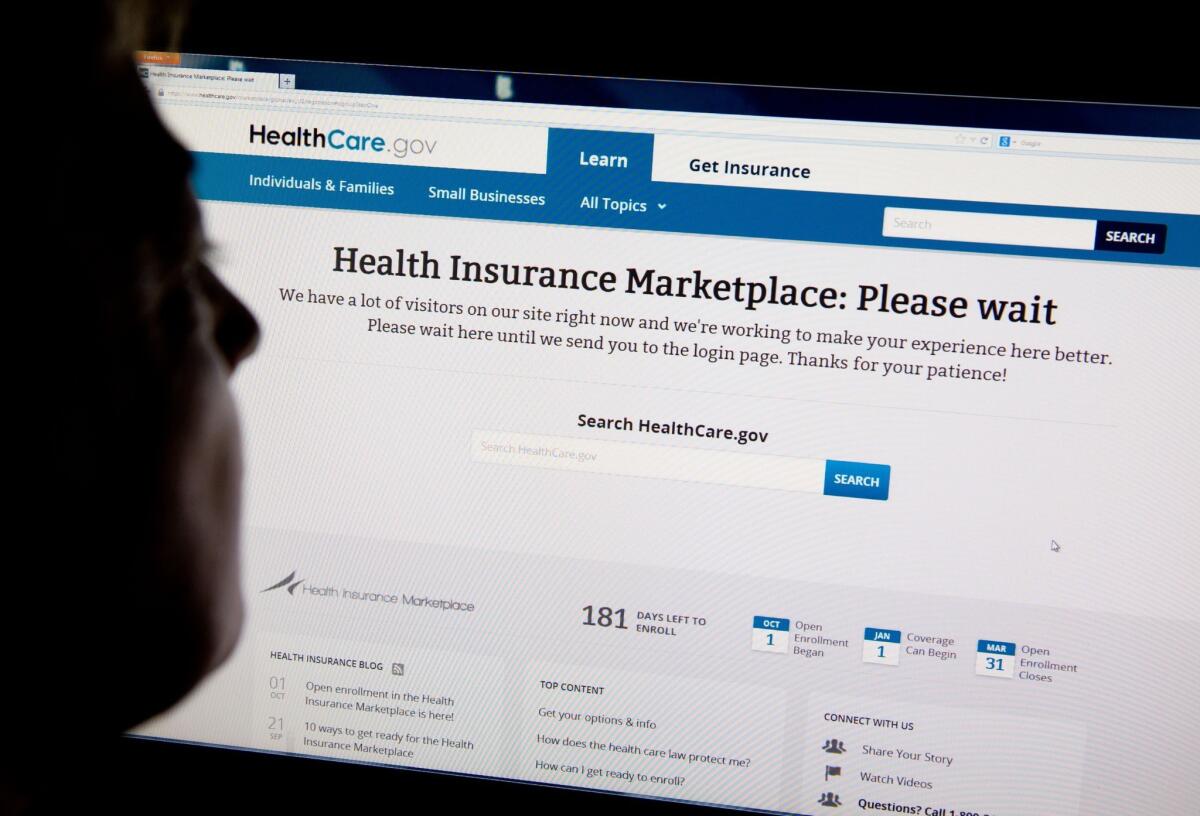Giving Obamacare some help

- Share via
The longer it takes the Obama administration to fix the problems at Healthcare.gov, the greater the risk that some Americans will be left without health insurance coverage when the new year begins. That’s why the administration has rightly, albeit belatedly, tried to provide more ways to sign up for subsidized policies online. Some of the alternatives should be embraced by the states that are running their own insurance exchanges, regardless of how well their sites are functioning. But others have real drawbacks.
At issue is whether insurers and online insurance brokers will be able to sell subsidized policies on behalf of the exchanges, which serve consumers who don’t receive health benefits from their employers. Doing so requires them to connect to federal databases to determine the buyers’ eligibility, calculate any appropriate subsidies and arrange payment to the insurer of their choice. To date, technical problems have prevented those systems from inter-operating. An administration spokeswoman said Tuesday that most of the problems had been solved, but insurers and insurance site operators said more work needed to be done.
Enabling health insurers to enroll customers directly through their own websites would take some of the pressure off struggling Healthcare.gov, which serves the federally-run health insurance exchanges in 36 states, and let more people sign up for coverage sooner. The downside, though, is that each insurer is likely to offer only its own policies rather than letting consumers browse through the full array of offerings at the exchange. So once Healthcare.gov is fully functional — assuming that day ever arrives — there would be little need for insurers to continue doing direct enrollments.
PHOTO ESSAY: Obamacare -- and 8 other bungled launches
By contrast, sites operated by brokers such as eHealth, Go Health and GetInsured offer shoppers the full array of plans available, as well as different ways to browse through them. That’s what the 2010 healthcare law was designed to do — increase competition among insurers by making it easier for people to comparison shop. And although some consumer advocates worry that such sites won’t be honest brokers, federal regulations bar them from taking payments from insurers or charging higher premiums than the exchanges do.
These sites can enroll people only in unsubsidized plans, not subsidized ones. Several state exchanges, including Covered California, have said that they plan to work with such sites in the future but that it wasn’t a top priority. Nevertheless, the exchanges can only benefit from the outreach, innovation and choice that the sites bring. The biggest challenge the exchanges face is to persuade a large, diverse group of people to buy coverage, and the sites could be valuable allies on that front.
More to Read
A cure for the common opinion
Get thought-provoking perspectives with our weekly newsletter.
You may occasionally receive promotional content from the Los Angeles Times.









